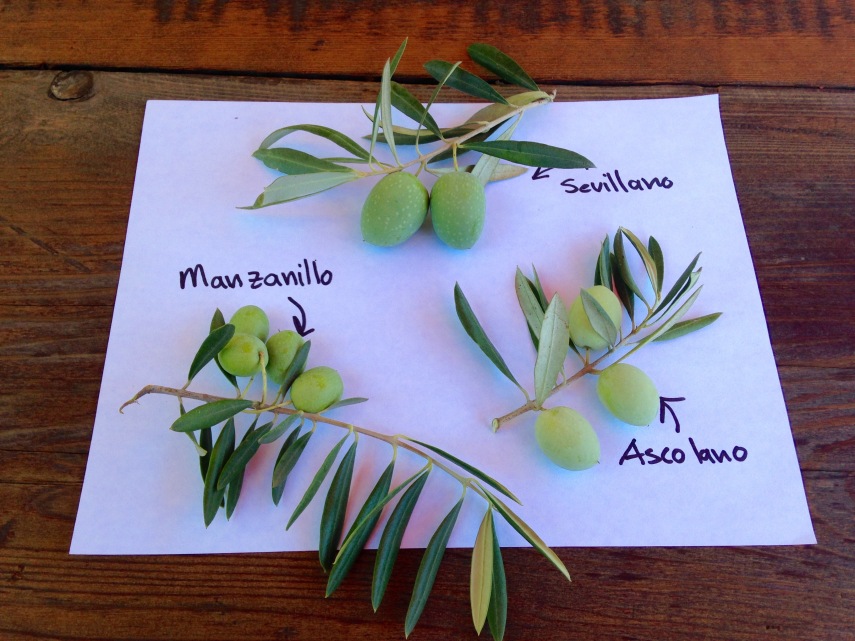These three varieties of olive are the mainstay of the table olive and olive oil industry in California we have built today.
Pictured here are three different varieties of olives that were first planted in California for canning before the olive oil boom over 10 years ago. Many were planted over 100 years ago. Now, these same varieties are crushed for oil too.
Manzanillo – A Spanish variety, fruit smaller in size. The most popular canning olive in California because of its high meat to pit ratio and buttery flavor. When crushed for oil the flavor can be medium to robust early in the season, then delicate and smooth later in the season when more mature. This is a great blending oil, and when on the more robust side a great oil for higher polyphenols (sometimes over 300 in total phenol count) and strong olive flavor. It typically can yield around 35 gallons/ton. I’ve had it go over 40 gallons/ton late in the season with more mature fruit (mostly purple/black).
Sevillano – A Spanish variety, fruit very large in size. It was the most popular canning olive in California until Manzanillo came along, and still is a great “stuffing olive.” Due to its large size, Sevillano is typically stuffed with popular gourmet foods like garlic, nuts and jalapeños. Interestingly, my dad made the point that one reason Manzanillo beat out Sevillano in popularity was because more Manzanillo olives could fit in a jar/can because they were smaller, almost twice the amount. Most Sevillano trees in California are over 100 years old, with no new plantings in recent years. Some of the oldest olive trees in the US are Sevillano, most in Corning, California (my home town). Sevillano olives can be crushed for oil, and the oil can be amazingly delicate and fruity! However the yield of oil can be very low, under 20 gallons per ton. It has a very low polyphenol count as well, many times under 100 total phenols in the oil, therefore it has a shorter life span than most oils.
Ascolano – A Tuscan variety, fruit medium to large in size and a very cold hardy tree. It was widely planted in California about 20 years ago because growers were told to do so by the canners. Soon thereafter the canners found that Ascolano bruised easily and were not appetizing to customers, so sales never took off. These growers were left with nowhere to go with their fruit until a few olive oil companies started to crush it for oil, like myself starting in 2005. Unfortunately, there were some who pulled out their entire groves. I believe Ascolano has played a key role in transforming the olive oil industry because it provided a completely different profile and flavor experience, as apposed to Mission (traditionally crushed for oil in California for 100’s of years) that really opened people’s eyes to the fact that olive oils could taste differently. It has also been one oil that has helped to separate me from other companies over the years. Ascolano is an outrageously delicious olive oil with a very unique fruity flavor. It’s one of my favorites, wonderfully complex and tropical. The nose is like no other olive oil, with bright floral notes. It can taste like peaches, apricots and mango when made well. If crushed on the green side you can yield oil high in polyphenols over 400 total phenol count, with more robust flavors of grass, tomato leaf and fresh green olives.
**Not mentioned here are the two olive varieties Mission & Arbequina, which are hugely important to the olive oil industry itself. I’ve decided to highlight them in a separate post in the future. Also, it should be mentioned that all these olive varieties are hand harvested, accept the newest variety Arbequina, which is mechanically harvested.
A few resources to read more about olive varieties:
Paul M. Vossen and Deborah Silver UC Davis Extension
Santa Cruz Olive Nursery
Olive Oil Source
– Dewey –

Leave a Reply
Be the First to Comment!